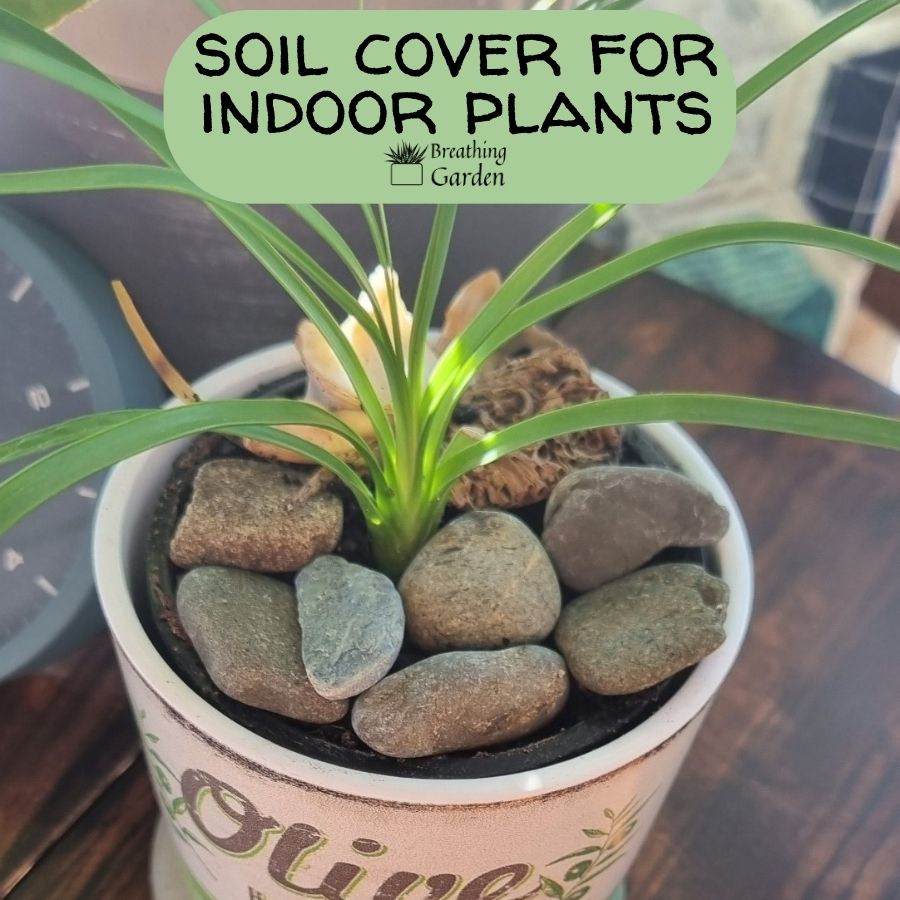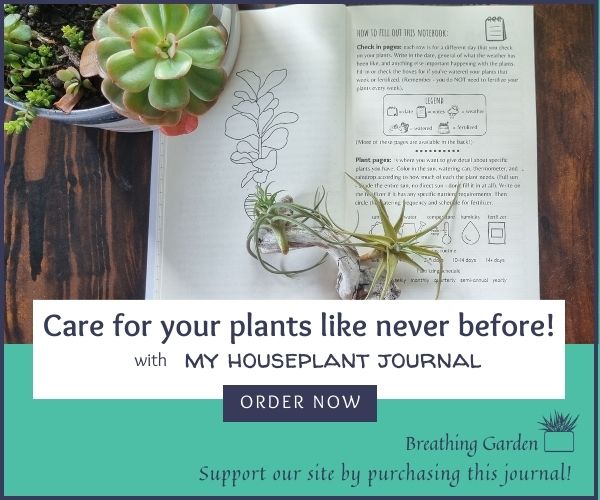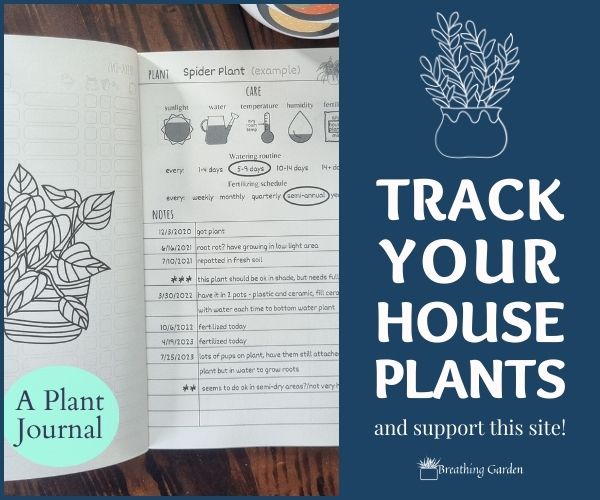Keeping indoor plants healthy and thriving is no easy task, but one way to improve the soil conditions for your potted plants is by using soil cover for indoor plants. This can help protect the delicate root systems of indoor plants, reduce water evaporation from the potting mix, and even provide additional nutrients to a plant’s roots. However, there are potential drawbacks that come with using a soil cover as well.
*This post may include affiliate links. When you purchase items from these links, we will receive a small commission, at no extra cost to you, to help support this website. Thank you for your support! Read more ->
In this article, we will explore the benefits and drawbacks of using soil cover for indoor plants so you can make an informed decision about whether or not it’s right for your home garden, and which to use!
Benefits of Indoor Plant Soil Covering
Using soil cover for indoor plants offers several benefits that can help make your home gardening experience easier and more successful. Between not having to water as often, protecting the plants from pets, less soil spillage, and fewer gnats, these are just some of the advantages of covering the soil.
If you cover the soil of your indoor plants, it can help reduce the amount of time you need to spend watering your potted plants. Soil covers keep moisture in the potting mix, reducing water evaporation and helping to maintain healthy levels of hydration around plant roots. This means that when it comes time to water your plants, you won’t have to do it as often!
Another great reason to have your indoor plants soil covered is if you have pets that like to get into things. Depending on the type of cover, this will protect the soil from pets that like to dig in the dirt or knock plants over, it’ll hopefully be less of a mess made!
One of the main reasons I use soil cover for indoor plants is to minimize the gnats that inevitably find their way into the potting soil. These tiny, pesky creatures can be especially annoying when it comes to indoor plants since they tend to congregate around moist soil. Having an inorganic cover for the soil will keep these bugs away, as they can’t lay their eggs in a non-organic material.
Drawbacks of Having Soil Cover for Potted Plants
While all of the items above sound so enticing you may want to immediately cover the soil of your potted plants, there are some drawbacks. This can include accidentally overwatering your plants, making it more difficult to water your plants, making your plants heavier, or inviting in other insects to your home.
Since having something covering the soil will keep moisture from dissipating from the surface, it can be difficult to adjust to watering less. It’s also more difficult to check the soil moisture for if it needs to be watered or not, which can lead to overwatering your plants and not really knowing it.
Depending on what you choose to cover the soil with also can have an impact on how easy it is to water the soil. If it’s thoroughly covered, you may not be able to have good access to the soil in order to water it properly without making a mess.
Also, if you’re using rocks or pebbles or something similar, it can make the plant heavier, which could limit where you put the plant or make it more difficult to move if you do need to adjust the plant placement.
Another potential drawback of covering your indoor plants’ soil is that you may be introducing new bugs into your home. If you are using organic material, such as compost or mulch, then you could attract small insects like gnats and fruit flies to come and lay eggs in the material.
Types of Soil Coverings
Now that we’ve discussed the pros and cons of if you should use soil cover for indoor plants, let’s look at the most common types! This we’ll split into non-organic (doesn’t require water/won’t break down over time) and organic (will break down over time or does require water).
Inorganic: Rocks
For the most part, rocks are a non-organic material, unless you’re using charcoal or pumice.
Putting rocks on top of potted plants can be a great way to keep the soil and plant safe from pets while adding a decorative touch. These can also add a special feel if you’ve decorated the rocks, found them at your favorite river, or have some other special meaning to you. Rocks are also very easy to come by.
Non Organic: Glass Marbles
Another fun soil cover for indoor plants are glass marbles. These can be purchased easily, and are commonly used in vases with fake plants or in aquarium tanks. Choose your favorite color and add them on top of the soil to keep moisture in the soil for longer and fewer insects hovering over the soil.
One suggestion if you’re looking at these marbles is to choose the ones that have a flat side, rather than spherical ones. These will be less likely to end up all over the floor if your plant does get jostled.
Organic Material: Moss
Moss is a great choice for indoor plants and can be used both to reduce water evaporation from the soil and, if you buy it in a living form, can even add additional nutrients to the soil. Moss is a great choice if you don’t want to have to keep replacing the soil cover every so often.
Just keep in mind that, depending on the kind of moss, it may soak up all of the water for itself without letting the actual plant’s soil get the water.
(read my opinion on sphagnum moss here)
Organic Material: Wood Chips, Mulch, Pine Needles
Wood chips, mulch, and pine needles can be an option of soil cover for indoor plants, although there are some precautions to take before bringing these materials into your home. These are great options as they will help keep the moisture in and provide additional nutrients, but can also contain insects and unwanted pests into your house.
Pine needles are especially great for plants that like acidic soil, like roses or citrus plants.
Just be sure if you do bring in any of these organic materials to quarantine either the material alone for a few weeks or the plants with this topping to keep the bugs from spreading to other plants if they do bring in fact harbor pests.
In Summary: To Cover or Not To Cover Soil of Indoor Plants
Soil cover for indoor plants can be a great way to keep water in the potting soil and provide extra protection from pets or bugs. However, it’s important to consider the drawbacks of this approach and choose the right material for your indoor plants. Rocks, glass marbles, moss, wood chips, mulch, and pine needles can all be good options depending on the needs of your indoor plants. Just be sure to keep an eye on your watering habits and how much water the plants need and any pests that may be introduced by these materials.
All in all, soil cover can be a great choice for your indoor plants, as long as you take into account the pros and cons of doing so. With the right material and some careful monitoring, you can have healthy and thriving plants with less maintenance on your end!
Happy planting!



